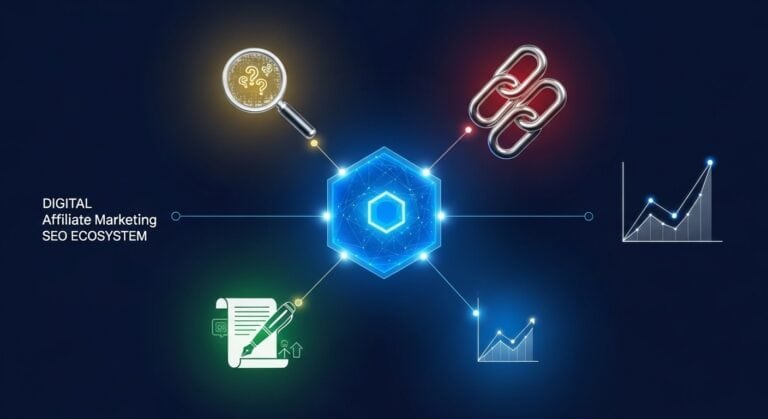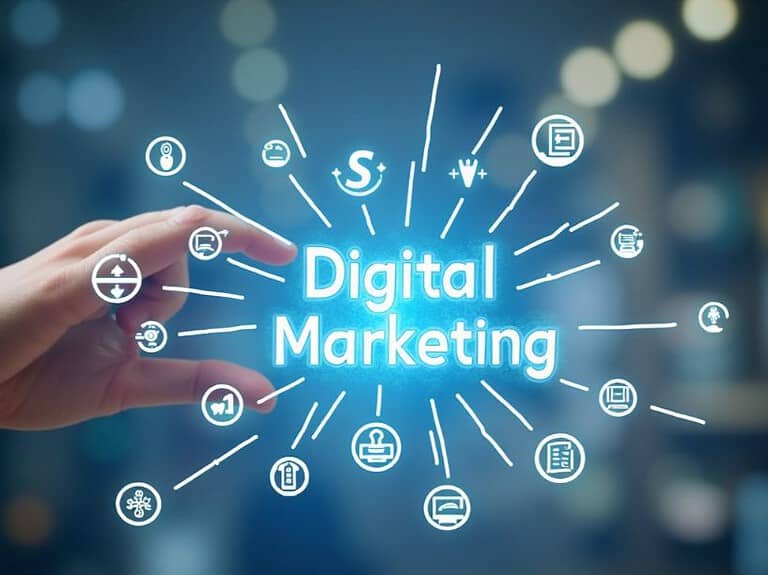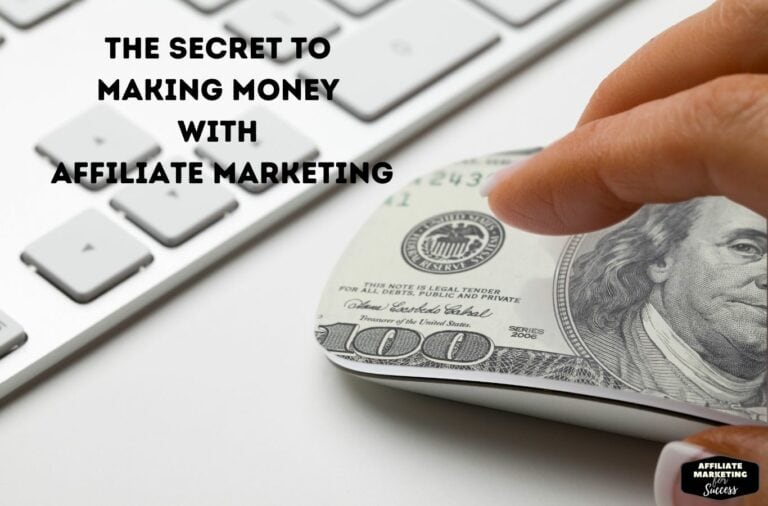Affiliate Marketing Explained Simply: How It Works & How to Earn Money
Affiliate marketing lets you earn money by promoting products. You get a unique link for each product. When someone clicks your link and buys, you get paid a commission. It’s not a get-rich-quick scheme. It takes work like any business. Learn the real process here. We skip the hype. We show you the steps, tools, and rules that work. Build income based on clear facts, not empty promises.
Key Takeaways
- Affiliate marketing is performance-based: earn commissions for sales or leads you generate.
- Unique affiliate links track your referrals and ensure you get paid for conversions.
- Choose high-paying, relevant digital marketing affiliate programs for better profitability.
- Affiliate networks simplify joining programs and provide tracking tools for managing many campaigns.
- Tracking clicks and conversions is essential for optimizing affiliate marketing strategies for success.
- Disclosure requirements are mandatory: be transparent about affiliate relationships with your audience.
- Passive income through affiliate marketing works best with high-traffic, evergreen content and SEO for affiliate marketing websites.
- Success requires choosing the right affiliates, using right tools, and learning from case studies of successful affiliate marketers.
Affiliate Marketing Explained Simply: What Is It?
You see a link. You click it. Someone gets paid. Simple?
Affiliate marketing is just referrals. But with links. And checks. It’s word-of-mouth on the internet. You promote stuff. You earn money when sales happen. No inventory. No shipping. No headaches.
How does it work?
Three players exist:
- Product creator
- Promoter (you)
- Customer
The creator makes the thing. You send traffic. Customer buys. You get a cut. That’s it.
Think real estate agents. They don’t build houses. They connect buyers. Then collect fees. Same logic. Just digital.
Why do brands agree? Because they only pay for results. No sales? No cost. Smart, right?
| Role | What They Do | Gets Paid When |
|---|---|---|
| Creator | Builds product | Product sells |
| You | Promotes product | Click leads to sale |
| Customer | Buys product | Owns product |
How do you promote? Blogs. Social media. Emails. Video. Pick one. Start small. Test often. Scale winners. It’s like fishing. Find bait that works. Then keep using it.
Your job isn’t selling. It’s directing attention. Find people who want answers. Show them solutions. Use content that earns trust. No sleaze. No hype. Just value.
“You don’t need fame. You need relevance.” — Unknown
Start with niches that pay. Check out how to pick niches here.
Result? A paycheck for nudging decisions. Easy? No. Simple? Yes.
You’ve done this already. Ever told a friend, “Try this app.” You just marketed. Now monetize it. Link in bio. Write content that converts.
How Affiliate Marketing Works: The Core Process Step by Step

Affiliate marketing isn’t magic. It’s a system. A process. You follow steps. You get paid. Let’s break it down.
Step 1: Pick the Right Offer
Not all products pay well. Some flop. You want high conversion. High commission. Evergreen demand. Is it something you’d buy? If not, skip it. Check proven winners here.
Step 2: Join an Affiliate Network or Program
Sign up. Get your unique link. Why? It tracks clicks. It tracks sales. Without it? No pay. Simple. Example? Walmart affiliate program. Solid. Scalable.
Step 3: Promote That Link
Now show people. Where? Blogs. YouTube. Email lists. Social posts. The click happens. The purchase happens. You get a cut.
“Traffic. Conversion. Commission. That’s the trilogy. Nail two. You’ll profit.”
Step 4: Track, Optimize, Repeat
Which links work? Which fail? Tools tell you. Double down on what works. Scrap what doesn’t. Think of it as hunting. Track. Aim. Kill.
| Stage | Key Action | Outcome |
|---|---|---|
| Pick Offer | Choose high-demand product | Profit potential set |
| Get Link | Register with program | Tracking activated |
| Promote | Post content, drive traffic | Click to sale |
| Optimize | Analyze metrics, adjust | Higher ROI |
Too many skip analysis. Don’t be that person. Test headlines. Test placements. Test timing. You’re not a blogger. You’re a marketer. Make every word count.
Affiliate Marketing for Beginners Guide: Your First Launchpad
New to affiliate marketing? Don’t overcomplicate it. Start here. Pick one path. Move. Many fail by waiting for perfection. There’s no perfect launch. Only action beats analysis paralysis every time.
Pick Your First Weapon
You need three things to launch: a niche, a platform, one product. Not ten. One. What excites you? Fitness? Tech? Finance? Doesn’t matter. Pick it. Then validate. How? Check profitable niches and see what’s hot, but real.
| Step | Action |
|---|---|
| 1 | Register a domain |
| 2 | Start a simple blog |
| 3 | Join 1-2 affiliate programs |
| 4 | Write 3 helpful posts |
Don’t Build Fancy. Build Functional
Your site doesn’t need sparkles. Needs speed. Needs clarity. Use this practical setup guide. Install WordPress. Pick a clean theme. Make it load fast. Less bounce. More trust. More clicks.
Want fast traffic? Skip social ads at first. Do content right. Track what ranks with core SEO basics. Put keywords where they belong. Title. First sentence. Subheadings. Simple.
You’ll get nowhere without proof. Post early. Post often. Write about real experience. Not opinion. What worked. What didn’t. People crave authenticity. Not robot talk. Not hype.
Launch fast. Fix later. Every day you wait costs cash.
What Is Affiliate Marketing and How Does It Work: The Key Players

Affiliate marketing is simple. You promote products. You earn a commission when someone buys through your link.
Three people make it work. The merchant. The affiliate. The customer. That’s it.
The Three Key Players
| Role | What They Do | Example |
|---|---|---|
| Merchant | Creates the product | Walmart, Amazon, SaaS site |
| Affiliate | Promotes the product | You, driving traffic to Walmart’s program |
| Customer | Makes the purchase | Shopper clicking your link |
The merchant wants sales. You want profit. The customer wants a solution. It’s a triangle. All sides win.
Think of it like a food truck. The chef cooks. You hand out flyers. The hungry person buys. Everyone gets paid. No one starves.
How do you get started? Pick a product. Join a program. Share your unique link. Drive traffic. That’s the loop.
Merchants win because they don’t pay unless you sell. You win because you keep a cut. Customers? They didn’t know about the product. You did them a favor.
- No inventory needed
- No customer support
- No warehouse
All you need is a voice. A channel. And a path to the sale. Whether that’s a blog, email, or YouTube. Doesn’t matter. Find what works. Stick to it. Watch your YouTube traffic convert.
The Relationship Between Merchants and Affiliates: A Partnership for Profit
Affiliate marketing boils down to one thing: a profit partnership. Merchants need sales. Affiliates need commissions. They help each other win.
Think of it like a real estate agent. You don’t own the house. But you get paid to sell it. Affiliates act the same way.
Roles in the Partnership
The merchant owns the product or service. They set the commission rate. They handle fulfillment. The affiliate promotes it. They drive traffic and sales.
| Merchant | Affiliate |
|---|---|
| Creates product | Builds audience |
| Sets commission | Generates leads |
| Handles support | Drives conversions |
Neither side wins without the other. The merchant gets exposure. The affiliate earns a cut. For both, results > effort.
Are you a merchant? You need affiliates who talk to your ideal buyers. Are you an affiliate? You need trustworthy merchants. Check out how to vet the right partners.
Success comes from alignment. Use transparency. Track performance. Pay quickly. Communicate well. A strong partnership lasts years, not months.
What’s your role? Can you add value clearly? If not, you’ll get ignored. Choose niches wisely. Stick to proven criteria for niches. Your credibility depends on it.
This isn’t a one-night stand. It’s a long-term alliance. Both sides grow. Both sides get paid. Mutual trust makes it happen.
Affiliate Links How They Work: Your Unique Digital Referral ID

An affiliate link is your digital referral ID. It’s unique. It tracks who sent the buyer.
Click the link. Buy the product. You get paid. Simple. But how?
The Tech Behind the Link
The link has your ID embedded. It’s like a secret code. When someone clicks it, cookies track them.
Cookies last 24 hours. Some 30 days. Depends on the network. If they buy, even later, you keep credit.
| Component | What It Does |
|---|---|
| Your ID | Attached to the link. Identifies you. |
| Tracking Cookie | Records the click and buyer’s action. |
| Affiliate Network | Logs clicks, sales. Pays you. |
Is it magic? No. Code. But is it powerful? Yes. One link. Many sales. One happy you.
Where to place these links? Think context. Match the offer to the need. Don’t shove it in. Provide value first.
Want better conversions? Read how to write converting meta descriptions. It applies here too.
Links in blogs work. But also in emails. Oh yes. Great email strategies drip these links with care.
Bad link placement? Like noise. Good placement? A helpful nudge. Which do you want?
Short links look nicer. Hide the ugly code. Use a simple redirect. Cleaner. Trust increases.
Are you using your unique ID? It’s not optional. Can’t earn without it. Don’t fear it. Own it.
Commission Structure in Affiliate Marketing: Flat, Tiered, and Recurring Payouts
Money flows differently in affiliate marketing. Three payout models dominate. Know them. Master them.
Flat Commissions: Simple. Predictable.
You get a fixed rate per sale. $10. $50. $200. No guesswork.
Great for beginners testing niches. Hosting companies love this. Kinsta pays a flat $50-$150 per referral. Simple math.
Tiered Commissions: Scale Up
Earnings grow with volume. Hit 10 sales? Rate jumps. Hit 25? Even higher.
Motivates action. Like a commission-based sales job. You make them money. They reward you.
“Tiered structures align incentives. Both sides win when volume increases.”
Recurring Commissions: The Gold Mine
You earn monthly from one sale. A subscription. SaaS. Dropshipping tool.
A $29/month tool with 20% recurring? $5.80 every month. Forever.
| Model | Payout Example | Best For |
|---|---|---|
| Flat | $50 per sale | Physical products, one-offs |
| Tiered | 5% at 1-10, 10% at 11-25 | High-ticket items |
| Recurring | 20% of $97/month | Digital tools, SaaS |
Want to find good recurring programs? Check which products pay most long-term. Pick your poison. Mix models. Just maximize payouts.
Always ask: What’s the *lifetime value* of a customer? Low flat rates can beat high tiered ones.
Affiliate Networks and How They Operate: Central Hubs for Offers and Payouts
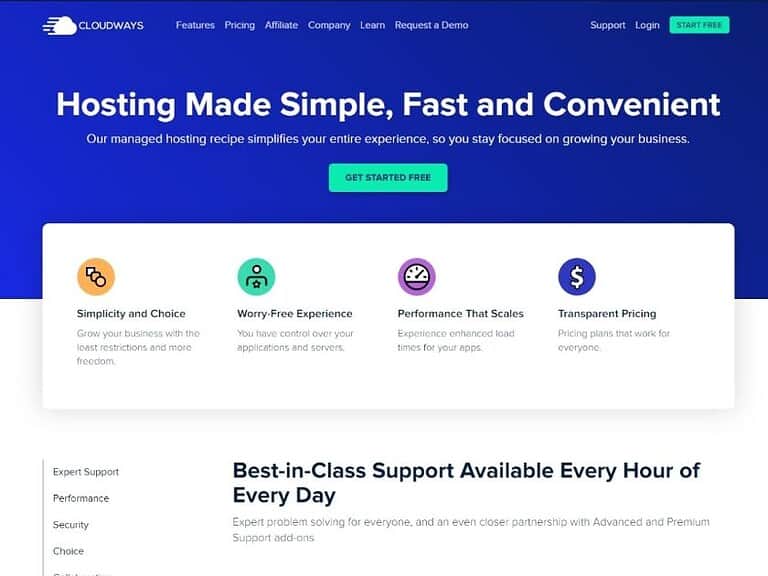
Affiliate networks act like middlemen. They connect advertisers and publishers. Think of them as stock exchanges for affiliate offers.
You sign up once. Then access hundreds of offers. No need to pitch brands directly. Networks handle tracking, reporting, and payments. All in one dashboard.
How They Keep Things Rolling
Networks earn a tiny cut from each sale. Usually 5-10%. It’s baked into the offer payout. You don’t pay anything upfront.
| Role | Example Interaction |
|---|---|
| Advertiser (Brand) | Posts “Walmart fitness gear” offer at 7% commission |
| Publisher (You) | Promote product—network tracks your link and sales |
| Network | Deposits your cut weekly or monthly—minus their slice |
Smart? Yes. Why join by yourself? You can’t scale with manual relationships. Networks let you click, promote, get paid. Simple.
Looking for high-paying examples? Try the Walmart Affiliate Program. Payouts are solid. Trust factor? Huge.
Top Benefits You Can’t Ignore
- Instant access to 100+ brands
- Reliable tracking (no missing sales)
- Automated payout schedules
- Performance analytics in real time
You want consistent income? Treat networks like your affiliate rolodex. Don’t waste time chasing single deals. Pick ones that match your audience. Start promoting today. Is your blog ready? If not, check how to start an affiliate marketing blog. Then claim your spot at the table.
How to Earn Money with Affiliate Marketing: From Zero to First Commission
You started at zero. No audience. No traffic. No trust. Yet you want that first commission. How do you get it? Simple. Focus on one thing: solving a problem for one person.
Step 1: Pick a niche with buyers
Not “makeup.” Not “fitness.” Go deeper. Try “vegan makeup for sensitive skin” or “home workouts for busy dads.” Buyers spend. You want buyers. Check out how to find profitable niches fast and avoid dead ends.
Step 2: Create content that answers one question
Someone Googles: “Best running shoes after knee surgery.” You answer that. Solve that. Not ten products. One. Honest. Clear. Helpful. Use a blog. A video. A post. But make it solve their pain.
| Content Type | Effort | Conversion Speed |
|---|---|---|
| Blog post | Low | Fast |
| Video (short) | Medium | Very fast |
| Email review | Low | Fast |
Step 3: Drive one click
Use Reddit. Facebook. Search. DM someone with the same problem. Don’t mass blast. Talk to one human. Help them. Link your post. No fake hype. Just value.
Your first commission comes from trust. Not views. Not likes. One person clicks. Buys. You get paid. Then repeat.
Got traffic but no sales? Sounds like you need better offers. See what top affiliates look for in programs before you promote junk.
Best Practices for Successful Affiliate Marketing: Proven Tactics That Scale
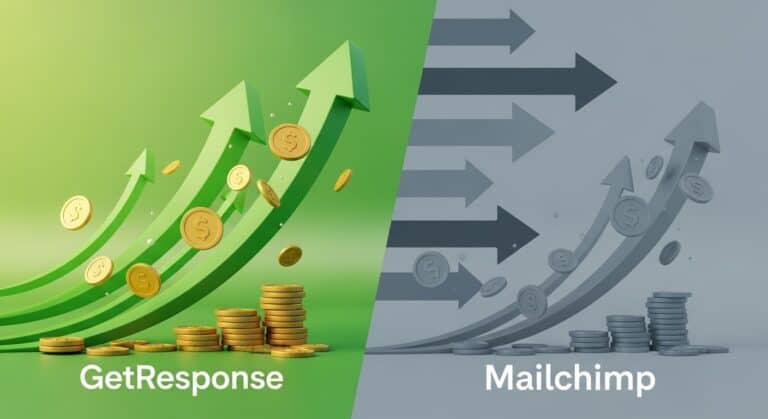
Want to scale affiliate marketing? Stop guessing. Start executing. Here’s how winners do it.
Pick Winners, Not Just Products
Promote products that sell. Easy to use. High demand. Strong reputation. You’re not flogging junk. You’re solving problems. What’s your audience *itching* to buy?
Check out our profitable niches guide to spot goldmines fast.
Content That Pulls, Not Pushes
People block ads. They ignore hype. Write content so good they forget you’re selling. Answer real questions. Share real experiences. Is your post useful? Or just promotional?
- Be honest. Depth beats hype.
- Show proof. Use screenshots, videos.
- Stay fresh. Update posts quarterly.
| Bad Practice | Good Practice |
|---|---|
| “This product is amazing!” | “I used this for 30 days. Here’s what changed.” |
| Generic reviews | Long-term testing notes |
Build Trust. Then Convert.
Trust comes first. Always. Share pros *and* cons. Readers sniff out lies fast. Would you buy from *you*? If not, fix it.
“People don’t buy what you do. They buy why you do it.” – Simplified for affiliates.
Email lists turn viewers into buyers. Drip campaigns work. But only if your content is fire. Grab our email playbook to keep leads warm.
Speed matters. SEO matters more. Is your site fast? Mobile-friendly? If not, install Pagespeed Insights and act on it.
Affiliate Marketing Platforms to Use: Comparing Popular Options
Choosing the right affiliate marketing platforms makes or breaks your success. You want reliable tracking. Fair commissions. Repeat, high-ticket offers. But which ones deliver?
Top Platforms Compared
Ignore the noise. These three dominate for a reason. Here’s how they stack up:
| Platform | Best For | Min Payout | Cookie Length |
|---|---|---|---|
| Amazon Associates | Beginners, general niches | $10 | 24 hours |
| ShareASale | Mid to high-ticket products | $50 | Up to 30 days |
| PartnerStack | B2B SaaS, recurring revenue | $25 | Up to 90 days |
Amazon’s great for testing content ideas. But low cookie duration kills conversions. ShareASale offers variety. PartnerStack attracts B2B. But you need volume. Which suits your niche? Pick based on product cost, not brand familiarity. Need help finding what fits? Check our affiliate niche criteria checklist.
- High-ticket? Demand ≥60 day cookies.
- Software focus? Target SaaS aggregators.
- Content-heavy blog? Prioritize easy linking tools.
Many overlook Walmart. It’s rising. Check the Walmart Affiliate Program. It beats Amazon in several key product categories.
“Platform selection is 50% of the battle. Good picks mask poor content. Bad picks ruin great work.” — High-earning affiliates
Test one platform. Scale what works. Never spread too thin. Focus wins. Always.
Tracking Clicks and Conversions in Affiliate Marketing: Data is Your Compass
Data guides every decision in affiliate marketing. You can’t improve what you don’t track. Clicks and conversions show what’s working. They’re your compass for growth.
Clicks Indicate Interest
A click means someone sees value in your offer. But it’s only step one. Did they buy? Subscribe? Download? Ask: What happens after the click? Traffic without action wastes effort.
Conversions Prove Value
Conversions are real wins. They’re completed sales. Leads. Sign-ups. They reveal which links earn money. Which audiences respond best. Which blog posts drive revenue?
| Metric | Tracks | Action |
|---|---|---|
| Clicks | Audience interest | Test headlines, placement |
| Conversions | Sales effectiveness | Optimize landing pages |
| Click-to-Sale Rate | Overall performance | Refine targeting, offers |
Most platforms show these stats. Learn to read them. They tell the story behind your results.
Low clicks? Try better exposure. Low conversions? Maybe your offer lacks trust. Ask: What does my data reveal? Adjust. Repeat.
Data doesn’t lie. It shows your true path to profit.
Compare different links. See which products convert higher. Test time of post. Day of week. Audience segment. Every variable matters.
Track obsessively. Optimize ruthlessly. Small changes compound. That’s how you scale profits.
Affiliate Marketing Strategies for Success: Content, SEO, and Social Media Synergy
Content drives clicks. SEO drives traffic. Social media drives engagement. Combine them? You get affiliate marketing success. Here’s how to make it work.
Content That Converts
Write reviews. Compare products. Share tutorials. Readers trust honest, helpful content. Avoid hype. Most affiliates fail here. They promote randomly. You must solve problems. Ask: What does my audience need?
For example, a laptop review should answer: Which model lasts longest? Or: Which one’s best for gaming? Pair it with SEO-friendly formatting.
SEO: The Traffic Lever
Google rewards quality. Target long-tail keywords. Like “best budget headphones for working out.” These get less traffic. But they convert better. Use tools like NeuronWriter or Frase to spot gaps. Check [INTERNAL_LINK slug=”seo-writing-a-complete-guide-to-seo-writing” text=”this SEO writing checklist].
| Channel | Best Use |
|---|---|
| Blog | Detailed guides, reviews |
| YouTube | Video demos, comparisons |
| Twitter/X | Quick tips, engagement |
Social Media: Spark Conversations
Post highlights. Run polls. Share user feedback. But don’t over-promote. People ignore pushy salespeople. Think teacher, not marketer. Offer value first. Then share your affiliate link.
Want help planning? See [INTERNAL_LINK slug=”how-to-make-a-social-media-marketing-plan” text=”this social media marketing plan template].
Start small. Pick one strategy. Master it. Then add another. Keep improving. That’s how winners win.
Costs Involved in Running Affiliate Marketing: Budgeting for Visibility and Growth
Running affiliate marketing has costs. Don’t fear them. Plan for them.
Free methods exist. But smart budgets speed up results. What’s your bottom line? Where’s your checkbook?
Essential Expenses to Budget For
Money spent properly beats hoping for luck. Treat this like a business. It *is* a business.
Biggest cost? Time. But money speeds up time.
| Expense | Avg. Monthly Cost | Why It Matters |
|---|---|---|
| Web Hosting | $20 – $100 | Need speed & reliability. Check how to pick solid hosting. |
| Domain Name | $10 – $15/yr | Your brand’s address. Get it now at domain registration guide. |
| SEO Tools | $20 – $100 | Find keywords, fix issues. No visibility? No sales. Never skip this. |
| Email Marketing | $10 – $50 | Build trust fast. Use effective email strategies to close deals. |
Want traffic? Paid ads kickstart reach. Test small. Facebook, Google, YouTube. Set firm limits. Stop losers fast.
Content costs too. AI tools? Writers? High-quality beats cheap. Bad content repels buyers. What message do you send?
- Budget with purpose. Track every dollar.
- Spend on performance, not shiny distractions.
- Double winners. Cut losers. Fast.
Profit isn’t afterthought. It’s part of the plan from day one.
Tools for Managing Affiliate Marketing Campaigns: Streamline Clicks, Sales, and Earnings
Running affiliate campaigns without tools? It’s like driving blindfolded. You need systems to track clicks, sales, and payouts. The right tools save time. They boost profits. What’s your current setup?
Must-Have Tools for Affiliate Marketers
Here’s what top producers use:
| Tool Type | Why It Matters |
|---|---|
| Link Cloaking | Hides ugly URLs. Builds trust. Tracks performance. |
| Analytics Dashboards | Shows top offers. Reveals audience behavior. |
| Email Automation | Captures leads. Nurtures clicks. Converts cold traffic. |
Don’t promote random products. Use data. Find hot items with profitable niche criteria. Match tools to offers. Test relentlessly.
Tool Integration That Works
Smart marketers connect everything. They want seamless flow:
- Landing page → cloaked link → analytics
- Blog post → email optin → automated follow-up
- Sale → commission tracker → payout proof
Does your content convert? Write articles that rank and sell. Use proven blog post frameworks. Pair with tools like ThirstyAffiliates or Pretty Links.
“The difference between guessing and succeeding? Systems that show real results. Track then optimize.” – Top 1% affiliate
Hosting matters too. Slow sites bleed sales. Reliable hosting keeps links active. See our Kinsta review for speed benchmarks.
Stop flying blind. Pick 1-2 tools. Master them. Scale. What’s your #1 tracking problem today?
Frequently Asked Questions
Does affiliate marketing really work in 2025?
Yes, affiliate marketing still works in 2025 if done right. People trust real reviews and recommendations, and platforms like YouTube, TikTok, and blogs drive sales. Focus on a niche, pick quality products, and be honest to build trust. It’s not a get-rich-quick scheme, but it can pay off with time and effort.
How to choose the right affiliate products for my niche?
Pick products that match your audience’s needs and solve their problems. Check reviews, commission rates, and demand before promoting. Stick with reputable brands to build trust. Test different options to see what converts best.
What are affiliate disclosure requirements and how do I comply?
Affiliate disclosure requirements mean you must clearly tell your audience when you earn money from product links. Place a visible notice near affiliate links, like “We earn a commission if you buy through this link.” Rules vary by country, but the FTC (U.S.) and similar agencies require honest, upfront transparency. Keep it simple—users should never be surprised you profit from their clicks.
Can I earn passive income through affiliate marketing?
Yes, you can earn passive income through affiliate marketing by promoting products or services and earning commissions on sales made through your referral links. It requires upfront work to build an audience or platform, but once set up, you can earn money repeatedly with minimal ongoing effort. Focus on creating quality content and choosing reliable affiliate programs to maximize results.
Affiliate marketing vs other online income methods: Which is better?
Affiliate marketing is simpler to start than most online income methods because it requires no product creation or customer service. However, methods like freelancing or selling digital products can offer higher long-term profits if you build skills or a loyal audience. The “better” option depends on your goals: affiliate marketing for quick commissions, or other methods for more control and scalability. Start with what fits your time, budget, and expertise.
What are some real-world affiliate marketing examples beyond blog links?
Affiliate marketing goes beyond blogs. You see it in YouTube videos where creators recommend products with purchase links in descriptions. Social media influencers share discount codes, and podcasts mention brands with unique URLs. Even comparison sites earn commissions by linking to retailers or services.
How important is SEO for affiliate marketing websites?
SEO is crucial for affiliate marketing websites because it drives free, targeted traffic from search engines. Without good SEO, your site won’t rank high, and potential buyers won’t find your content. Strong rankings mean more clicks, leading to higher chances of earning commissions.
What digital marketing affiliate programs have the longest cookies?
Some digital marketing affiliate programs with the longest cookies include Amazon (24 hours to 90 days, depending on the product), ShareASale (up to 120 days), and CJ Affiliate (often 30-60 days). Shopify’s affiliate program also offers a 30-day cookie. These programs usually reward you even if the customer buys within the cookie window.
Affiliate marketing is a real, scalable way to make money online. Use the process, networks, and tracking tools covered here. Pick relevant products. Follow best practices for disclosure and SEO. Track results. Learn from case studies. Use free and paid tools to improve. Costs exist, but ROI comes with focus. Build a passive income stream with real content. Start small. Scale smart. Be patient. This model rewards action and consistency.
References
- What is Affiliate Marketing and How Does it Work? [1.1] – YouTube
- Affiliate Marketing (HOW IT WORKS) – thedoublethink
- Affiliate Marketing 101: What it is and How to Get Started
- What Is Affiliate Marketing? (Our Step-By-Step Guide) | SUCCESS
- What Is Affiliate Marketing and How Does It Work? [Guide]
- What Is Affiliate Marketing and How to Get Started – Coursera
- What is affiliate marketing and how does it work? – Funnel.io
- Affiliate Marketer: Definition, Examples, and How to Get Started
I’m Alexios Papaioannou, an experienced affiliate marketer and content creator. With a decade of expertise, I excel in crafting engaging blog posts to boost your brand. My love for running fuels my creativity. Let’s create exceptional content together!


